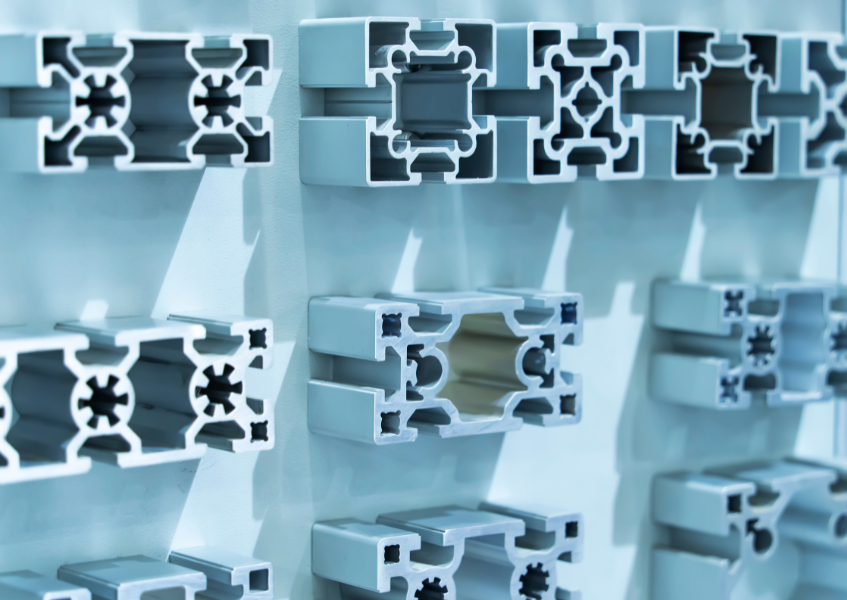PROFILE EXTRUSION
Profile extrusion is a continuous manufacturing process used to create plastic products with a fixed cross-sectional shape. It’s ideal for producing long, uniform profiles such as window frames, tubing, weather stripping, cable insulation, and more.
Advantages of Profile Extrusion
Cost-efficient for long runs: Continuous process keeps per-foot cost low.
High consistency: Excellent dimensional accuracy and repeatability.
Design flexibility: Custom profiles tailored for specific functions—e.g., seals, trims, channels, gaskets, tubing.
Scalable production: Easy to scale from pilot to high-volume manufacturing.
Fast turnaround for tooling: Die creation is faster and less expensive compared to injection molding.
Supports co-extrusion: Multiple materials or colors in one profile (e.g., rigid base + flexible sealing edge).


The Process:
The Process:
- Feeding
- Plastic pellets or granules are fed from a hopper into a heated barrel.
- Melting
- A rotating screw inside the barrel conveys the material forward, where heaters melt it into a homogeneous molten state.
- Extrusion Through Die
- The molten plastic is forced through a custom-designed die, which shapes the material into the desired profile cross-section.
- Cooling
- The hot extruded profile enters a cooling system—usually a water bath or air-cooled chamber—where it solidifies while maintaining shape.
- Pulling
- A puller system maintains tension and consistent line speed, ensuring smooth, uniform extrusion.
- Cutting or Coiling
- The continuous profile is either cut to length or coiled for storage and transport, depending on the product.
Decision Drivers
Decision Drivers
- Shape of the Final Product: Molten plastic is forced through a shaped die to create long, continuous profiles.
- Production Volume & Length: Efficient for medium- to high-volume production runs; especially cost-effective for products made in continuous lengths
- Tooling & Cost: Great option when you need custom shapes but want to avoid high upfront mold investment
- Post-Processing: May require secondary operations like cutting, punching, or hole drilling.
 CONSIDER
CONSIDER